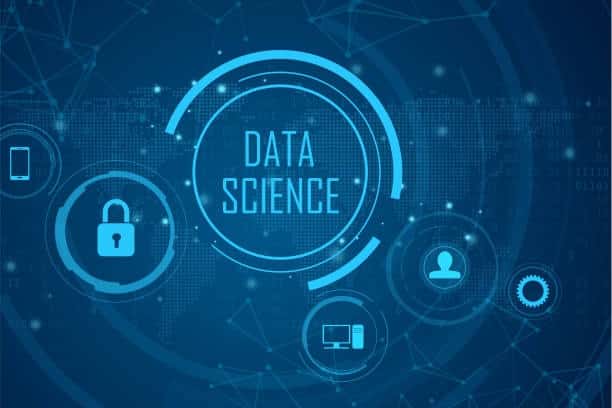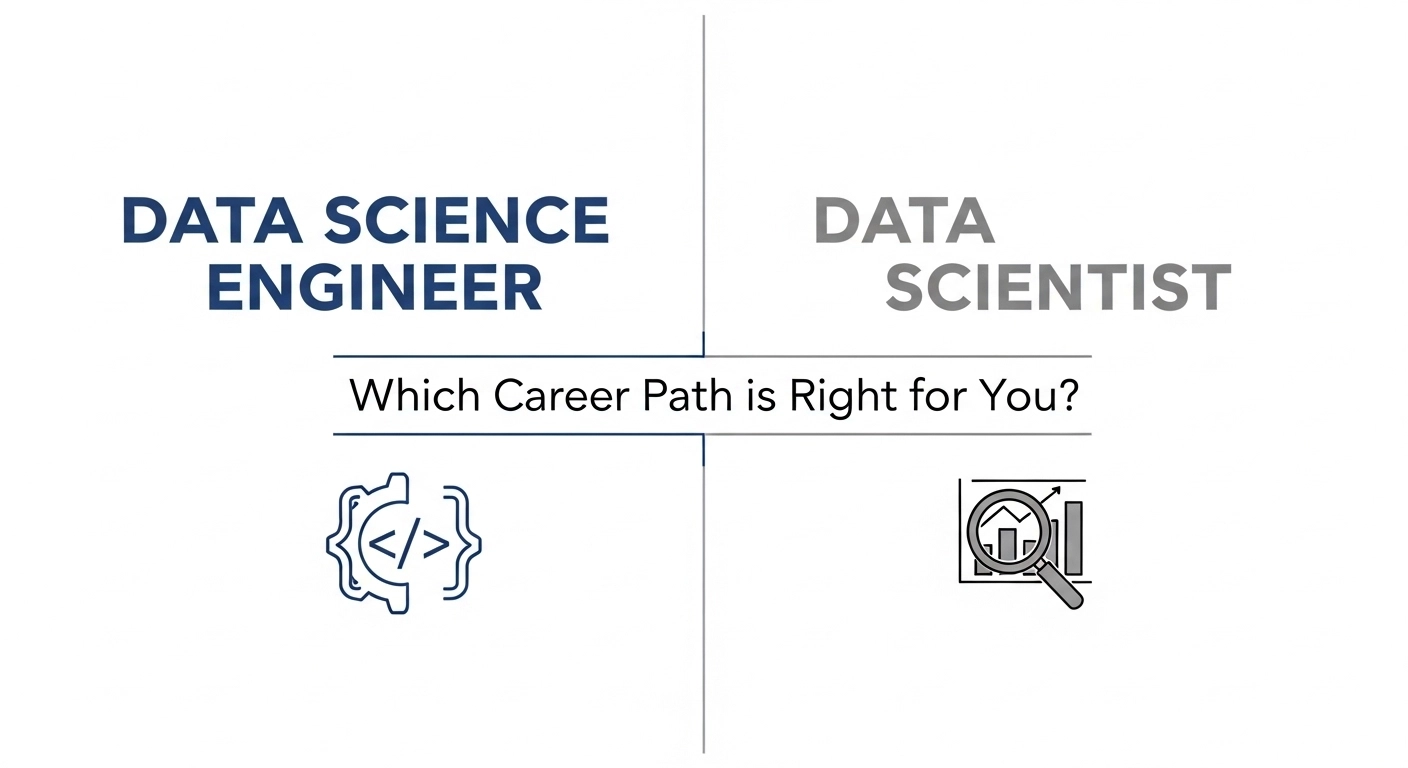Did You Know?
The global data science platform market was valued at USD 103.93 billion in 2023 and is expected to soar to USD 776.86 billion by 2032, growing at a CAGR of 24.7%.
With demand on the rise, transitioning into data science involves building both technical and soft skills, gaining hands-on experience, and knowing exactly what to learn.
This guide provides a clear roadmap with actionable steps, reliable resources, and guidance on building a solid foundation.
Through structured courses and industry-based projects, you can accelerate your growth and unlock a world of career opportunities in data science.
Understanding the Difference Between Data Analyst and Data Scientist Roles
Here’s a clear and concise comparison between Data Analyst and Data Scientist roles, covering key differences and similarities.
| Category | Data Analyst | Data Scientist |
| Definition | Analyzes structured data to generate actionable insights for business decisions. | Uses advanced algorithms and models to extract insights, predict outcomes, and solve complex problems. |
| Educational Requirements | Bachelor’s degree (mathematics, statistics, economics, or related fields). | Often requires a master’s or Ph.D. (computer science, statistics, or related fields). |
| Focus Area | Descriptive and diagnostic analytics for historical data. | Predictive and prescriptive analytics using structured and unstructured data. |
| Skills Needed | SQL, Excel, Tableau, data visualization, statistical analysis, data cleaning. | Programming (Python/R), machine learning, statistical modeling, deep learning, big data tools. |
| Key Responsibilities | Data collection, cleaning, analysis, report creation, visualization, and stakeholder presentations. | Data wrangling, feature engineering, model building, statistical analysis, and deep learning. |
| Industries | Common in finance, marketing, healthcare, and e-commerce. | Common in tech, research, healthcare, finance, and product development. |
| Average Salary (India) | INR 4-10 lakhs annually. | INR 8-20 lakhs annually. |
| Average Salary (US) | $69,000 – $100,000 annually. | $94,000 – $161,000 annually. |
| Average Salary (UK) | £34,000 – £43,000 annually. | £43,000 – £68,000 annually. |
| Career Outlook | High demand for business analysis and reporting roles. | High demand for machine learning and advanced analytics skills. |
For detailed information about data analysts and data scientists, you must check out data analyst vs data scientist.
Strengthen your learning foundation with our free courses.
- SQL for Data Science Free Course
- Data Analytics using Excel Free Course
- Introduction to Data Visualization in Tableau Free Course
- Free Python Courses
- Introduction to R Free Course
- Introduction to Machine Learning Free Course
- Introduction to Deep Learning Free Course
- Basics of Python Data Wrangling Free Course
Step-by-Step Guide to Transitioning from Data Analyst to Data Scientist
Step 1: Build a Solid Foundation in Programming and Advanced Statistics
- Objective: Strengthen programming skills, particularly in Python, and develop a deep understanding of statistics, which is foundational to data science.
- Actions:
Learn Python or R for Data Science: If you’re not already proficient in Python, start with beginner and intermediate Python courses that focus on data manipulation and visualization. Aim to cover libraries like Pandas, NumPy, and Matplotlib.
Deepen Your Understanding of Statistics: Focus on key concepts such as probability, statistical distributions, hypothesis testing, and correlation analysis, as these are used frequently in data science.
To build a solid foundation in programming and advanced statistics, exploring these free courses can be incredibly beneficial.
- Python for Data Analysis Free Course.
- R programming for Data Science Free Course
- NumPy Tutorial Free Course
- Python Pandas Free Course
- Python Matplotlib free course
Consider a Data Science Course to build a structured foundation in both programming and statistics.
Step 2: Master the Fundamentals of Machine Learning
- Aim: Understand the algorithms in Machine Learning and where they are used
- Actions:
Focus on the Core Algorithms: Linear regression, logistic regression, and decision trees are the best to make you familiarize with data-driven prediction ability of algorithms.
Progress to Intermediate Algorithms: Explore more complex algorithms like support vector machines, k-means clustering, and random forests. Use hands-on projects to practice each one.
Explore Model Evaluation Metrics: This includes accuracy, precision, recall, F1-score, and ROC-AUC, all of which are key features for evaluating model performance.
To master the fundamentals of machine learning, joining a comprehensive course like Great Learning’s MIT Data Science and Machine Learning Program is one of the best choices.
This program not only covers essential machine learning techniques but also provides real-world applications, ensuring you’re well-prepared to enter the field.
A structured, in-depth course like this also enhances your skills in data analysis, programming, and model-building, all crucial for success in data science and machine learning careers.
Discover free courses designed to elevate your learning.
- Linear Regression Free Course
- Logistic Regression Free Course
- Decision Tree Free Course
- Support Vector Machines Free Course
- Random Forest Free Course
Step 3: Work on Real-World Data Science Projects
- Objective: Build hands-on experience by working on projects that reflect real-world data science challenges.
- Actions:
Identify Relevant Datasets: Start with open-source datasets from platforms like Kaggle, UCI Machine Learning Repository, or GitHub.
Implement End-to-End Projects: Focus on projects that involve data cleaning, exploratory data analysis (EDA), feature engineering, model building, and model evaluation. Examples include predicting customer churn, analyzing sales forecasts, or creating recommendation systems.
Participate in Kaggle Competitions: Kaggle competitions are excellent for applying your skills in a competitive environment and learning from other participants’ solutions.
Project Documentation: Document each project thoroughly with an introduction, data description, EDA findings, model-building steps, and evaluation results. Share your projects on GitHub and LinkedIn.
Step 4: Get Familiar with Big Data Tools and Techniques
- Objective: Learn tools and platforms for handling large-scale data, as data scientists often work with “big data.”
- Actions:
Learn Hadoop and Spark: These are widely used for processing large datasets. Start with online tutorials that cover basics and common use cases.
NoSQL Databases: Familiarize yourself with NoSQL databases like MongoDB or Cassandra, which are often used in data science to manage unstructured data.
Work with Cloud Platforms: Platforms like AWS, Azure, and Google Cloud offer data science tools and are frequently used in enterprises.
Upgrade your skills at no cost with our free courses
- Hadoop Free Course
- Data Analysis Using Pyspark Free Course
- NoSQL databases Free Course
- MongoDB Free Course
- Cassandra Free Course
Step 5: Take Advanced Data Science Courses and Earn Certifications
- Objective: Formalize your learning with certifications that validate your skills and increase your credibility.
- Actions:
Enroll in a Comprehensive Data Science Course: A structured course can cover everything from Python programming to machine learning algorithms and big data techniques.
Certifications: Programs like PGP in Data Science, Applied Data Science and Machine Learning, or a master’s-level certificate from UT Austin or Great Lakes.
Certification Courses
Check out the best data science courses below from top-notch universities worldwide in collaboration with Great Learning.
1. PGP in Data Science
The PGP in Data Science is ideal for professionals seeking to merge data science with practical business insights. You’ll gain comprehensive knowledge of statistical methods, data analysis, and machine learning while learning how to apply these techniques to solve business challenges.
Program Highlights:
- 12-month program with flexible learning options to fit your schedule
- Learn 15+ languages & tools like Python, SQL, Tableau, and more
- Personalized weekend mentorship sessions with industry experts
- Work on real-world case studies from Netflix, Uber, Spotify, and more
- Complete 11 hands-on projects and 1 capstone project to build your portfolio
- Explore 40+ industry-specific case studies across different sectors
- Reinforce learning with 40+ quizzes (25 graded)
- Learn from world-renowned faculty and seasoned industry professionals
- Dedicated career support with resume reviews, interview prep, and job assistance
- Dual certification from UT Austin & Great Lakes, adding value to your resume
This data science online course suits professionals looking to switch careers or upskill in data science and analytics.
2. PGP in Artificial Intelligence and Machine Learning
This program is for those individuals who are interested in learning about machine learning and artificial intelligence on a professional level. With this highly curated program you will be able to make the desired transition in your career.
Program Highlights:
- Get a 360 degree understanding of AI and machine learning.
- 50% average salary hike, with 3300+ hiring companies.
- Exclusive access to the great learning job board.
- Live career mentorship with industry experts.
- Personalized resume and LinkedIn review.
- Flexible to learn anytime and anywhere.
- Dedicated program support.
- Weekly online mentorship sessions, networking opportunities with people of similar interests.
- Dual certification from UT Austin & Great Lakes, adding value to your resume.
These courses will give you solid fundamentals and advanced concepts to prepare you to stay current in the fast-paced field of data science.
Explore our free courses offered by Great Learning to kickstart your data science journey at no cost.
- Step by step guide to become a data scientist Free Course
- This course provides an overview of the essential skills, tools, and roadmap to start a career in data science, ideal for those just beginning the journey.
- Introduction to Data Science Free Course
- Covers data science basics, introducing key concepts and tools to help beginners understand the role and scope of data science in business and technology.
- Data Science Foundations Free Course
- Focuses on core data science concepts, such as statistics, probability, and data types, providing a strong foundation for more advanced learning.
- Data Preprocessing Free Course
- Teaches essential data cleaning and preparation techniques, a critical step in any data science project for ensuring data accuracy and usability.
- Data Visualization with Power BI Free Course
- This course covers data visualization skills using Power BI, enabling you to transform data into interactive, insightful reports for better decision-making.
- Data Visualization using Tableau Free Course
- Another excellent course on data visualization, this one focuses on Tableau, a widely used tool for creating impactful visual insights from complex datasets.
- Machine Learning with Python Free Course
- Introduces machine learning basics and Python implementation, providing foundational skills for building and understanding machine learning models.
Step 6: Build a Strong Data Science Portfolio
- Objective: A portfolio is supposed to showcase the skills and projects done so you can impress employers and thus allow you to stand out.
- Actions:
Choose Diverse Projects: Include projects that demonstrate skills across machine learning, data analysis, and data visualization. Make sure each project highlights different aspects of your skills, from regression models to clustering.
Use GitHub for Code: Publish your code on GitHub, making sure to include clear instructions for reproducibility and detailed READMEs.
Create a Personal Website or Portfolio: Use platforms like GitHub Pages or WordPress to display your projects, insights, and bio. LinkedIn can also be a great place to showcase your work.
Include a Data Science Blog: Blogging about data science topics, challenges, or insights from your projects can further demonstrate your expertise and communication skills.
Step 7: Network and Engage with the Data Science Community
- Goal: Network, gain insight from others, and learn what is going on in the industries.
- Actions:
Use LinkedIn groups: LinkedIn has a lot of groups in the data science space where posts related to insights, jobs and articles are shared by members.
Join Data Science Meetups/Attend Conferences: Events like PyData, Data Science Conference and local meetups are a good way to network and learn about the industry.
Interact on GitHub and Kaggle- These are places where you can keep track of data scientists, work on projects, and pick code snippets written by others.
Participate in Webinars and Forums: Many online communities, like Data Science Stack Exchange, provide a place to ask questions and learn from experts.
Final Tips for a Successful Career Transition
- Be Updated: Read about developments, trends, and new tools in the data science space as frequently as possible to stay ahead.
- Establish Specific Goals: Identify short-term and long-term goals, such as completing certain projects or passing specific certifications by certain dates.
- Hone the Skill of Lifelong Learning: Data science changes fast, and learning new skills to remain employable is the key here.
Conclusion
Transitioning from data analyst to data scientist requires a strategic approach to learning and practical experience. By following these steps, building a strong portfolio, and leveraging the right resources, you can successfully make the shift. Structured data science online courses and certifications are excellent tools to guide your journey and ensure that you acquire the skills needed to excel in your new role.
FAQs
The transition can take anywhere from 6 months to 2 years, depending on your prior experience and the amount of time you dedicate to learning new skills.
You can build a portfolio by working on real-world projects, participating in Kaggle competitions, and sharing your work on GitHub with detailed explanations and code.
No, while a degree in computer science can be helpful, many data scientists come from diverse fields like statistics, mathematics, engineering, or even business. Practical skills and experience are often more important.
Yes, many online courses provide placement support, networking opportunities, and career counseling to help students secure jobs post-completion. Additionally, platforms like Great Learning often have tie-ups with leading companies, enhancing placement chances.






